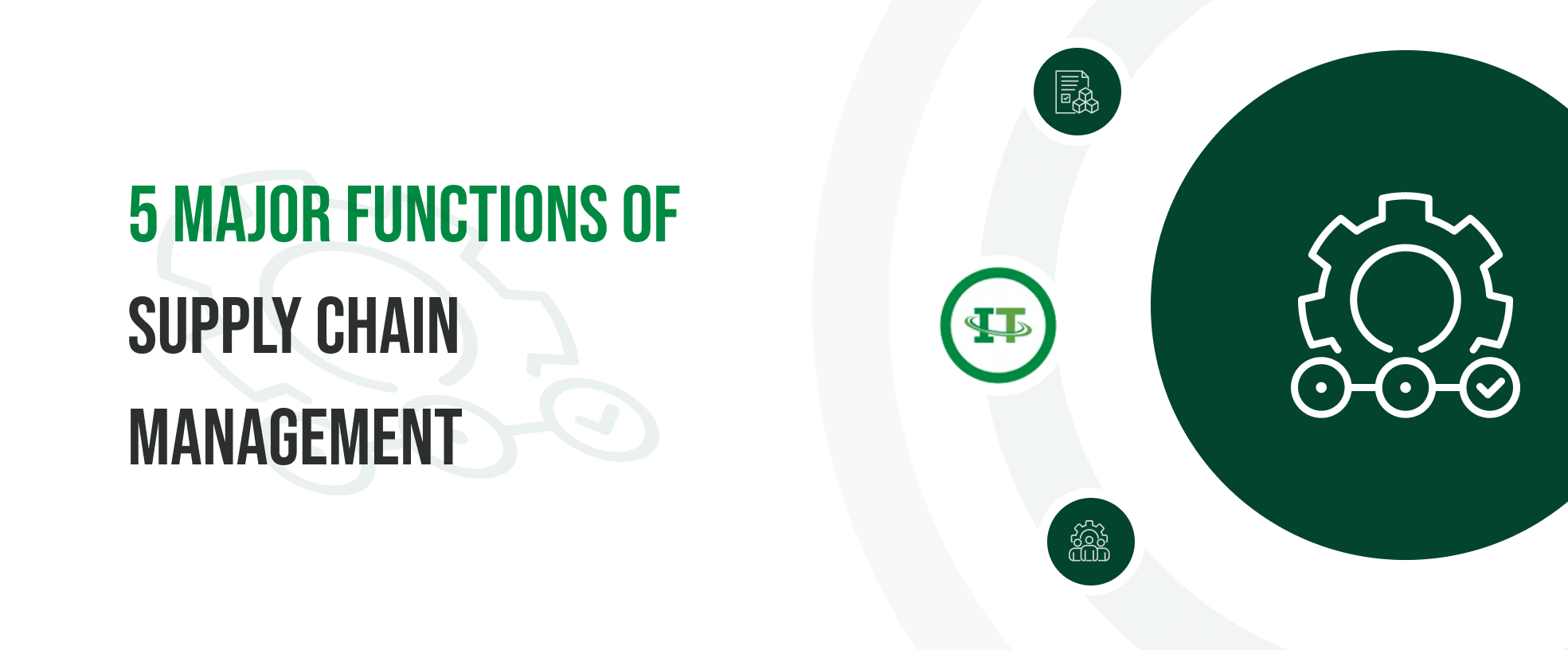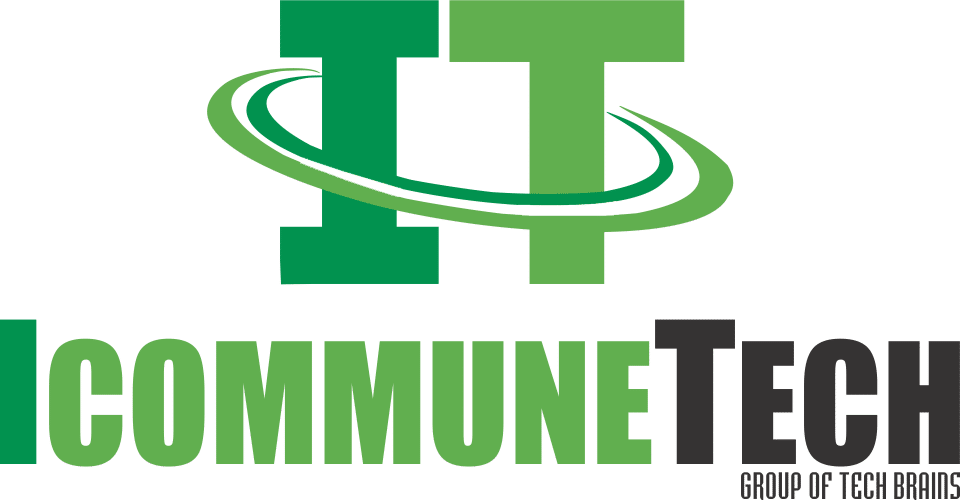What Are The Key Functions of Supply Chain Management?

Just like perfectly molded pots demonstrate a potter’s skills, profitably managed functions of supply chain management manifest their powerful features.
The article delves deep into the key functions of supply chain management, which help businesses save costs, increase efficiency, and streamline business operations.
A long and complex network is behind the successful delivery of products to customers’ doorsteps. From when products enter the supply chain until finally delivered, supply chain management carries out all the operations needed to make it successful. Hence, it is no less than a boon for efficient logistics movement.
What Will We Cover?
- Key Functions of Supply Chain Management
- 1. Purchasing
- 2. Operations
- 3. Logistics
- 4. Inventory Management
- 5. Information Workflow
Let us first understand the basics of Supply Chain Management (SCM).
What is meant by Supply Chain Management (SCM)?
Simply put, Supply Chain Management (SCM) is the strategy of monitoring, managing, and optimizing supplies from their entry as raw materials till they reach the distribution houses and are finally delivered. SCM ensures that every link from sourcing to the ultimate delivery functions well.
The five key functions of Supply Chain Management are Purchasing, Operations, Logistics, Inventory Control, and Information Workflow. These operations work in tandem to increase efficiency, save costs, and provide high transparency throughout the supply chain. An effective SCM means waste reduction, the best value for customers, and a competitive edge in the market.
Let us explore the five functions of supply chain management that make it all powerful and a must-have!
5 Functions of Supply Chain Management
All the core functions of supply chain management are the spokes on which the wheel of supply chain management stands intact. Each core function is the foundation for strong supply chain operations. These functions help businesses reduce waste, improve efficiency, and stay competitive.
1. Purchasing
Acquiring raw materials and other components from suppliers to achieve the company’s objectives is a process that includes several tasks, such as planning the product’s needs, handling the requisition, evaluating bids, etc. It is also about inspecting the acquired goods, managing release, and storage.
The process entails carefully planning the requirements and identifying the required materials and quantities. In addition, supply chain management functions include generating and handling purchase requisitions from various departments, evaluating suppliers’ needs, and choosing the best one.
Finally, creating and sending purchase orders to suppliers reliably also minimizes risks associated with supply disruptions, price volatility, or compliance issues. Building long-term relationships with trusted suppliers fosters better communication, flexibility during crises, and collaborative innovation.

Ultimately, a strong supplier network enhances the overall resilience and agility of the supply chain, positioning businesses to meet market demands effectively and maintain a competitive edge.” ensure clear terms and conditions.
Supplier Selection:
Choosing a reliable supplier is the key to the success of supply chain management. Selecting the best supplier ensures no associated risks, no volatile prices, and long-term relationships with the suppliers. This helps businesses meet market demands. A strong supplier network helps maintain a strong supply chain.
For example, a manufacturer negotiates with different vendors to secure the best quality, price, lead times, etc.
Cost Management:
Cost management means evaluating suppliers and analyzing costs for better procurement decisions according to your organization’s goals. It ensures that businesses get competitive pricing and provide consistent value to vendors. This helps in multiple ways, improving operational efficiency, risk integration, and long-term profitability.
For example, bulk purchasing of the packaging materials reduces the cost per unit.
2. Operations
This Supply chain management function encompasses the planning and coordination process to consistently deliver high-quality products and services.
Operations include aligning the supply chain processes with the business goals for efficient resource management. This function ensures smooth communication among all the stakeholders, from production to distribution. It optimizes the workflow, reduces resource wastage, and maintains the customers’ satisfaction level, which helps businesses achieve long-term success in the competitive market.
Production Planning:
Aligning the production output with the expected demand is essential for reducing waste. Production planning is critical as it helps businesses save considerable costs and provides far better operations, as it allows them to conserve raw materials and energy according to their exact needs.
Apart from that, demand-driven production planning makes sure that the products are available as and when required ensuring better profitability and business gains.
For example, a clothing manufacturing company produces the same units as the daily sales pattern predicted.
Quality Assurance:
Maintaining high standards for products can lead to high customer satisfaction and protect your brand’s reputation. Products undergo rigorous quality checks before hitting the market to ensure high quality.
For example, a tech company detects manufacturing or any other defect that can hamper its brand reputation.
3. Logistics
Logistics management is an integral part of the supply chain. It focuses on the movement and distribution of goods to ensure that products are delivered on time, to the right place, and in the proper condition. Contrary to popular belief, supply chain management and logistics management has a lot of differences between them, such as SCM covers the entire process, while logistics only covers the movement of goods.
The process entails managing transportation to improve cost efficiency and reliability. Logistics management aims to deliver products in the right condition. This function involves transportation, warehousing, inventory management, and more. It helps with cost control, among other things.
Transportation:
Managing and coordinating different transportation methods suited to the distance, cost efficiency, and reliability.
Road, rail, air, sea, and freight can be chosen according to the delivery time needed, the size of the shipment, its destination, and budget constraints. This helps the companies optimize fuel consumption and save costs.
For example, a company uses trucks nationwide for regional distribution and shipping logistics.
Last-Mile Deliveries:
Another vital aspect of logistics management is handling time-sensitive deliveries, also known as last-mile deliveries.
Last mile deliveries help the businesses retain their customers in real-time.
For example, e-commerce shipping offers same-day delivery to maintain a high customer satisfaction rate.
4. Inventory Management
Inventory management and control mean maintaining the right stocks to meet customer demands. Overstocks lead to resource waste, and understocks lead to unfulfilled customers’ needs.
Better management of inventory leads to cost savings, better handling of the resources and much more.
Stock Optimization:
When a balance between too much and too little inventory is achieved, it leads to loss prevention. When companies are able to maintain their stocks in real-time, they are better prepared for emergencies and also a huge cost savings can be made as well.
Striking a balance between too much and too little inventory avoids losses.
For example, a fashion retailer reduces excess stocks after studying the seasonal trends.
Warehousing:
Warehousing is an integral part of inventory management. Storing the supplies efficiently and organizing them in the best possible way supports quick access and high scalability.
The facility of warehousing and its optimization leads to better handled goods and automation of the warehouses leads to better efficiency.
For example, warehouse automation in the form of robotics eases the retrieval and packing of items.
5. Information Workflow
Information workflow means the flow of data without any hassles, which helps businesses make informed decisions on time. It also helps address supply chain disruptions and optimize business operations to give businesses a competitive edge.
A streamlined workflow enables real-time data sharing between several departments, like production, procurement, logistics, and more.
Data Sharing:
Effective data sharing is essential for managing the modern supply chain. Good data sharing ensures that suppliers collaborate well and get up-to-date information from time to time. With smooth and hassle-free data flows across the supply chain, errors can be reduced, and overall transparency is increased.
Analytics and Reporting:
Good supply chain management software’s predictive insights can help create useful data reports, which in turn help make strategic decisions, achieve better efficiency, and speed up response times.
For example, a company can forecast the peak demands of the season using sales records, patterns, and trends.
Each of these functions of supply chain management plays a vital role in maintaining the integrity of the supply chain. When these functions are aligned effectively, they lead to a strong foundation for your business, better efficiency, better productivity, better cost savings, and much more.
Let us move on to wind up the entire article and summarise the key takeaways!
Summary
Supply Chain Management is the fuel that keeps the supply chain running by handling different operations, such as Purchasing, operations, logistics management, inventory control, and more. Each function is important to keep the supply chain running efficiently and with high productivity.
Key Takeaways:
- Supply Chain Management (SCM) ensures the hassle-free flow of goods, services, and information from the point of origin to final delivery.
- An efficient SCM helps reduce cost, increase productivity, and improve customer satisfaction.
- The key supply chain management functions are procurement, logistics, inventory management, and operations.
- Advanced software increases visibility, helps in better decision making, leads to cost savings, and more.
Frequently Asked Questions (FAQs)
Unleashed here are a few of your doubts about the key functions of supply chain management. Let us know if you have anything else in mind anytime.
1. What is supply chain management?
Supply chain management involves planning, executing, monitoring, and coordinating the flow of goods, services, and information from suppliers to end customers.
2. What are the benefits of supply chain management?
There are multiple benefits of supply chain management. It improves overall efficiency, lowers operational costs, and helps in better decision making.
3. Are supply chain management and logistics the same?
No, logistics is just a part of supply chain management. SCM differs from logistics because it covers a broader range of activities, such as production, procurement, and coordination, while logistics only focuses on the movement of goods.
4. What software is used in supply chain management?
SCM software serves several purposes: inventory tracking, order processing, demand forecasting, and managing supplier relationships. Some of the best SCM software are Oracle, SAP, and NetSuite.
The Right Time To Fix Supply Chain Loopholes Is Now!
It’s better to be safe than sorry. Fix your supply chain inefficiencies today and embrace productivity. iCommuneTech has been helping businesses like yours for more than a decade. The cutting-edge SCM software it provides helps streamline and optimize your logistics.
Get in touch with us today!
Irshad Pathan

Web Development Expert
Irshad is a senior technical expert at iCommuneTech. He manages the iCommuneTech's Web Development Team, and has hands-on expertise in web development, Laravel development, Logistics, fleet management, and Supply Chain Management. He mentors the in-house team and enjoys describing his experience in words.
